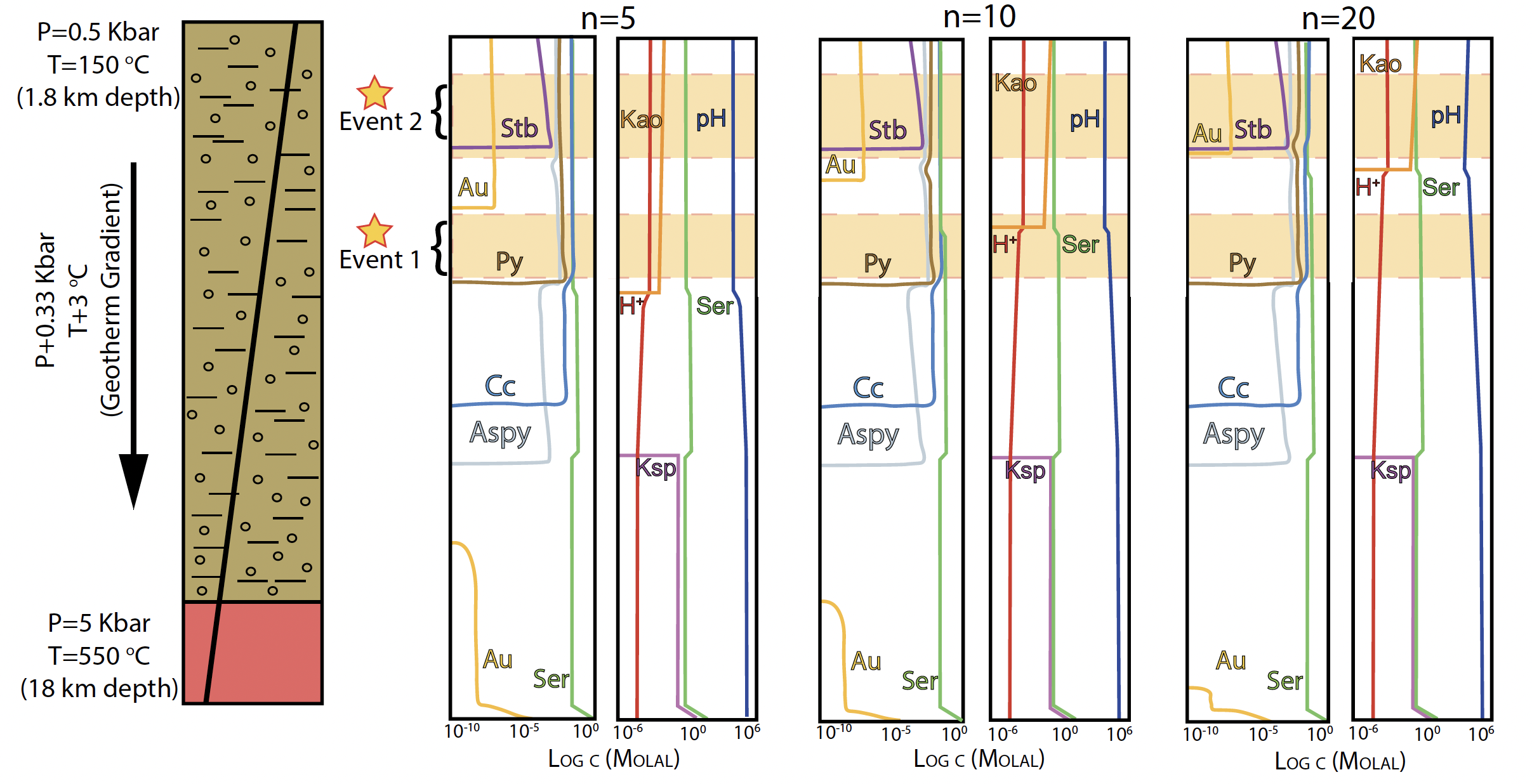Au-As-Sb formation in Fosterville Gold deposit, Victoria
When drill cores give the ore mineral assemblages at depth, it is fair to know how such mineral combination was formed. This is espcially important to help establish accurate ore genesis model in order to evaluate resource potential and guide exploration strategies. Geochemical modelling we used here demonstrates itself a powerful tool for this task, via a case study at Fosterville Gold deposit in Victoria. The deposit is known as a telescoped orogenic gold system with gold was found across a wide range of depth, and with different gold-rich mineral assemblages. Geochemical modelling successfully predicted the gold formation of these types, and provide good contraints on the distribution of indicator minerals/metals, i.g., As, Sb. This is an exciting example combing structrual geology, petrology analysis and geochemcial modelling to understand gold forming processes and to guide exploration in the region.

Here we modelled Au formation by reacting Au-bearing ore fluids with the host rock, turbidite, from deep to shallow. We able to model how pressure and temperature control the observed alteration mineralogy, that reprocuded what we observed in the drill core samples. Hence we can tell at what conditions Au-As-Sb are formed.
Reference
Voisey, C. R., Tomkins, A. G., & Xing, Y. (2020). Analysis of a Telescoped Orogenic Gold System: Insights from the Fosterville Deposit. Economic Geology, 115(8), 1645–1664. https://doi.org/10.5382/econgeo.4767
